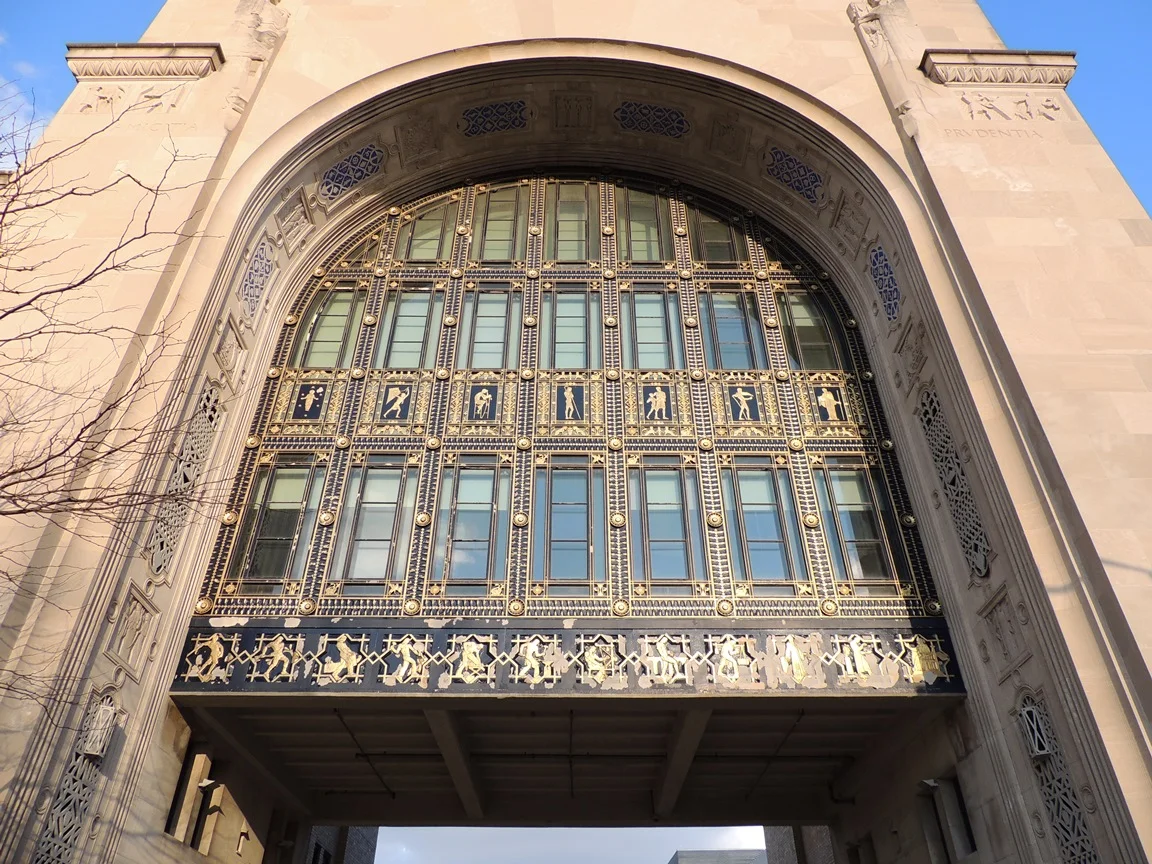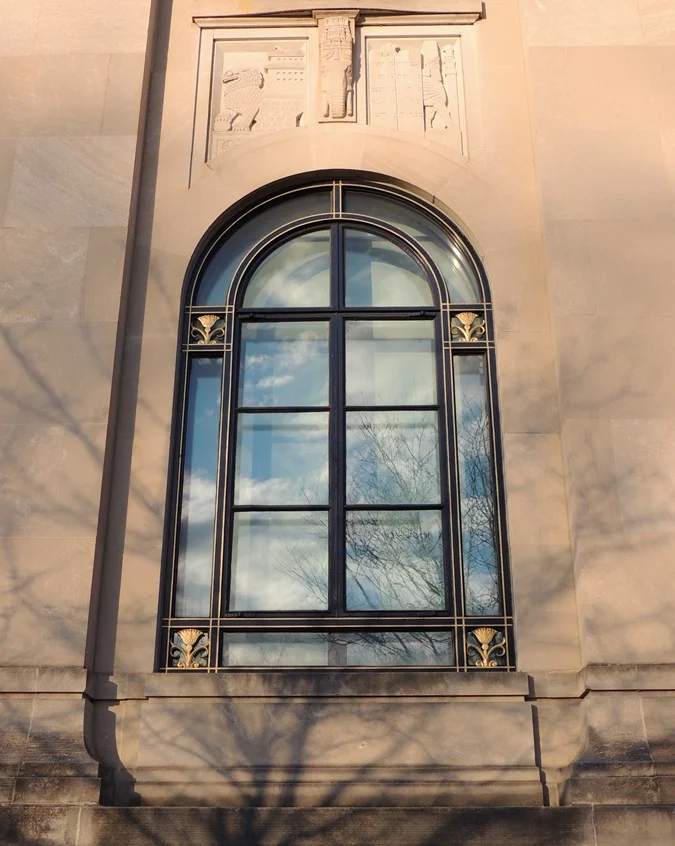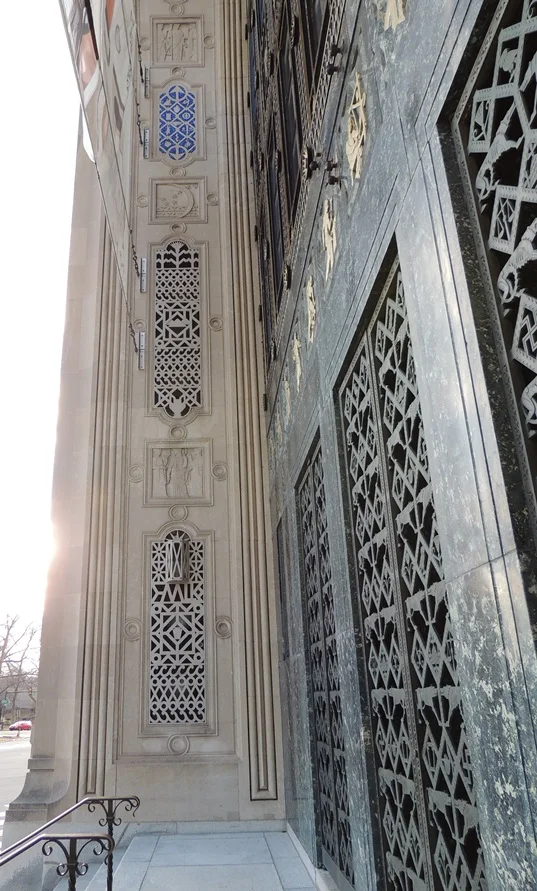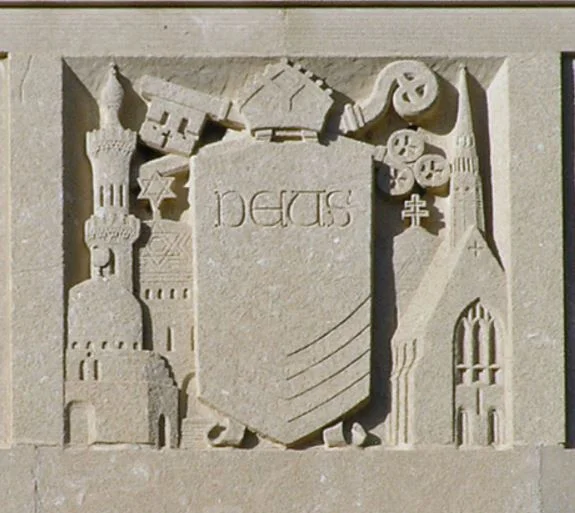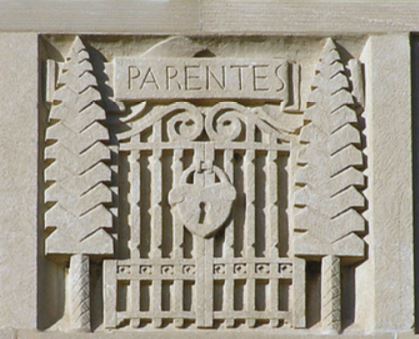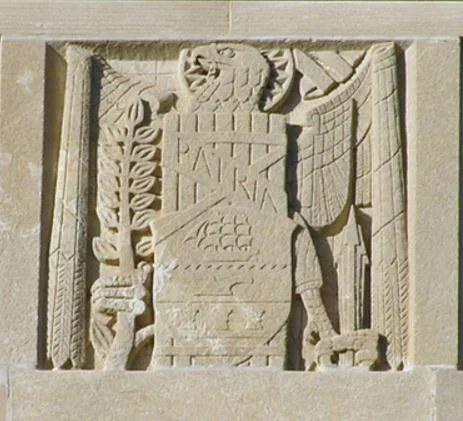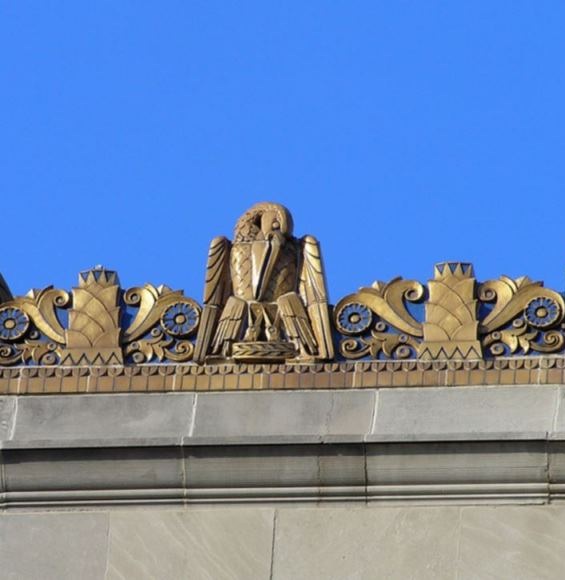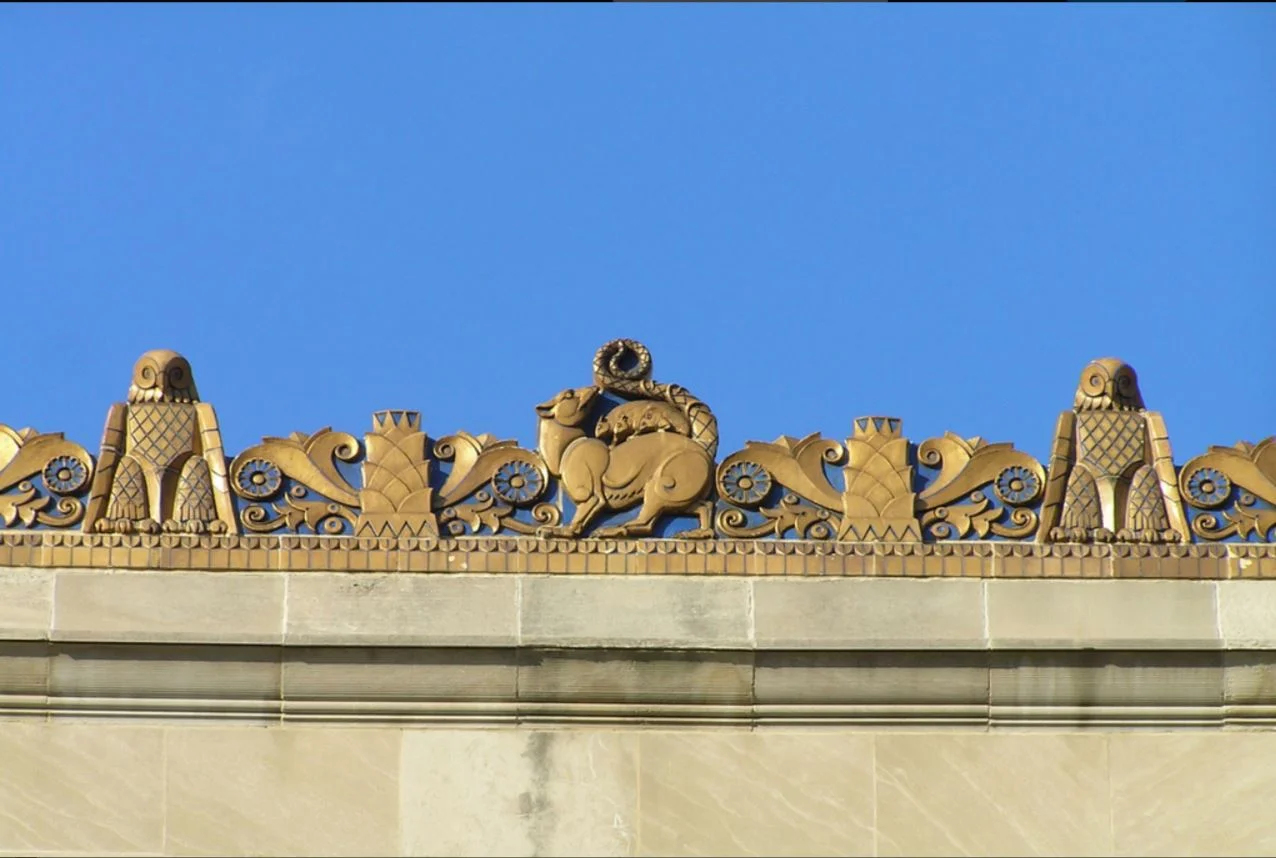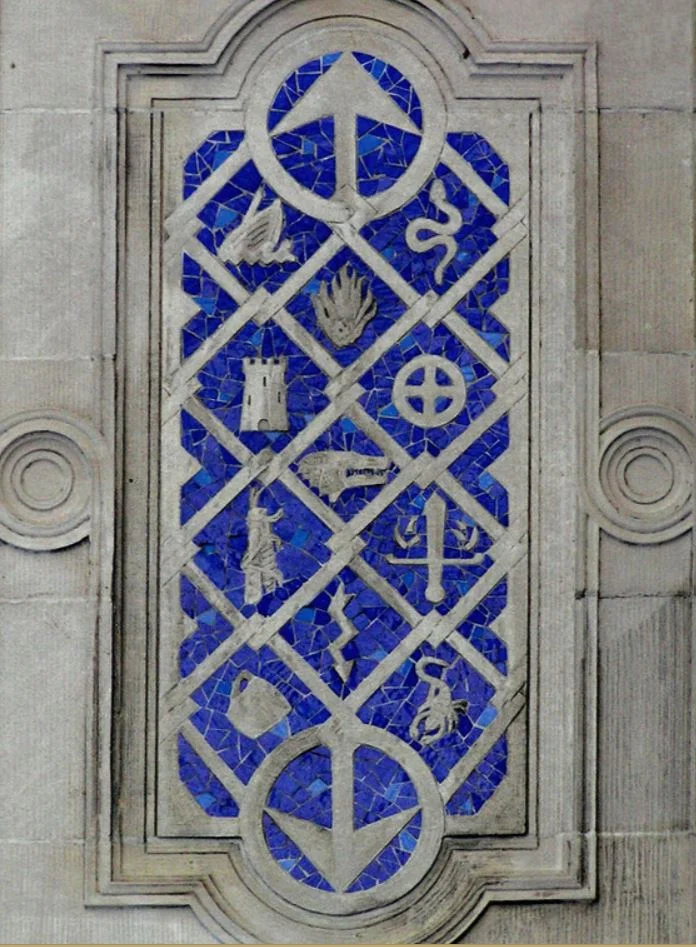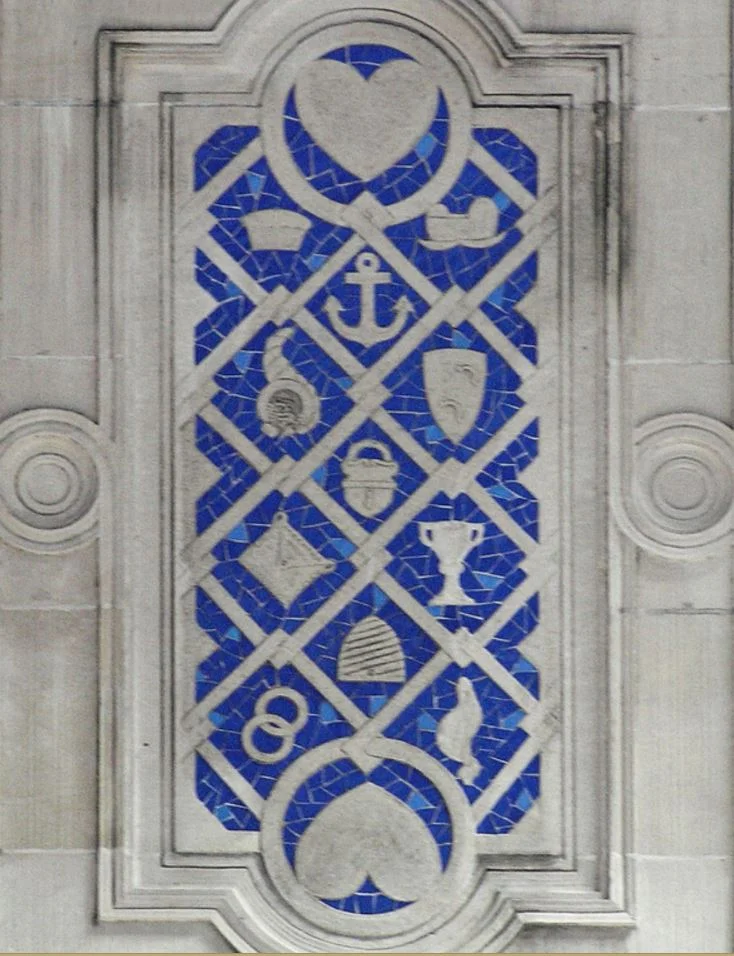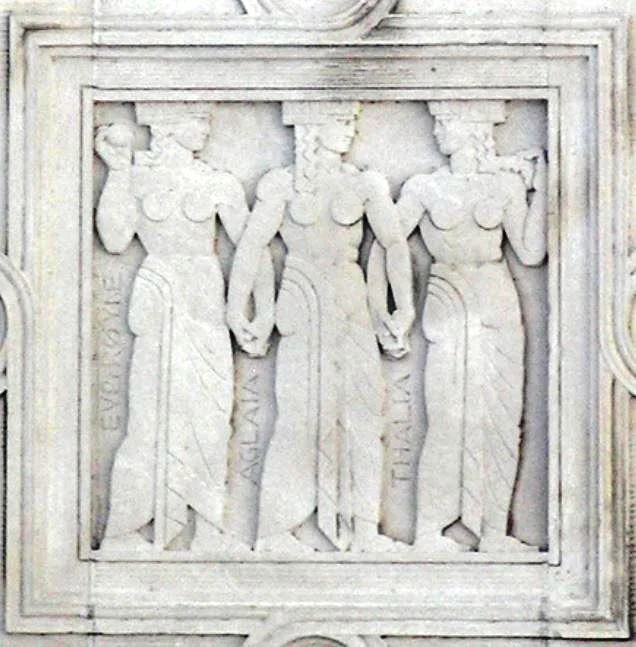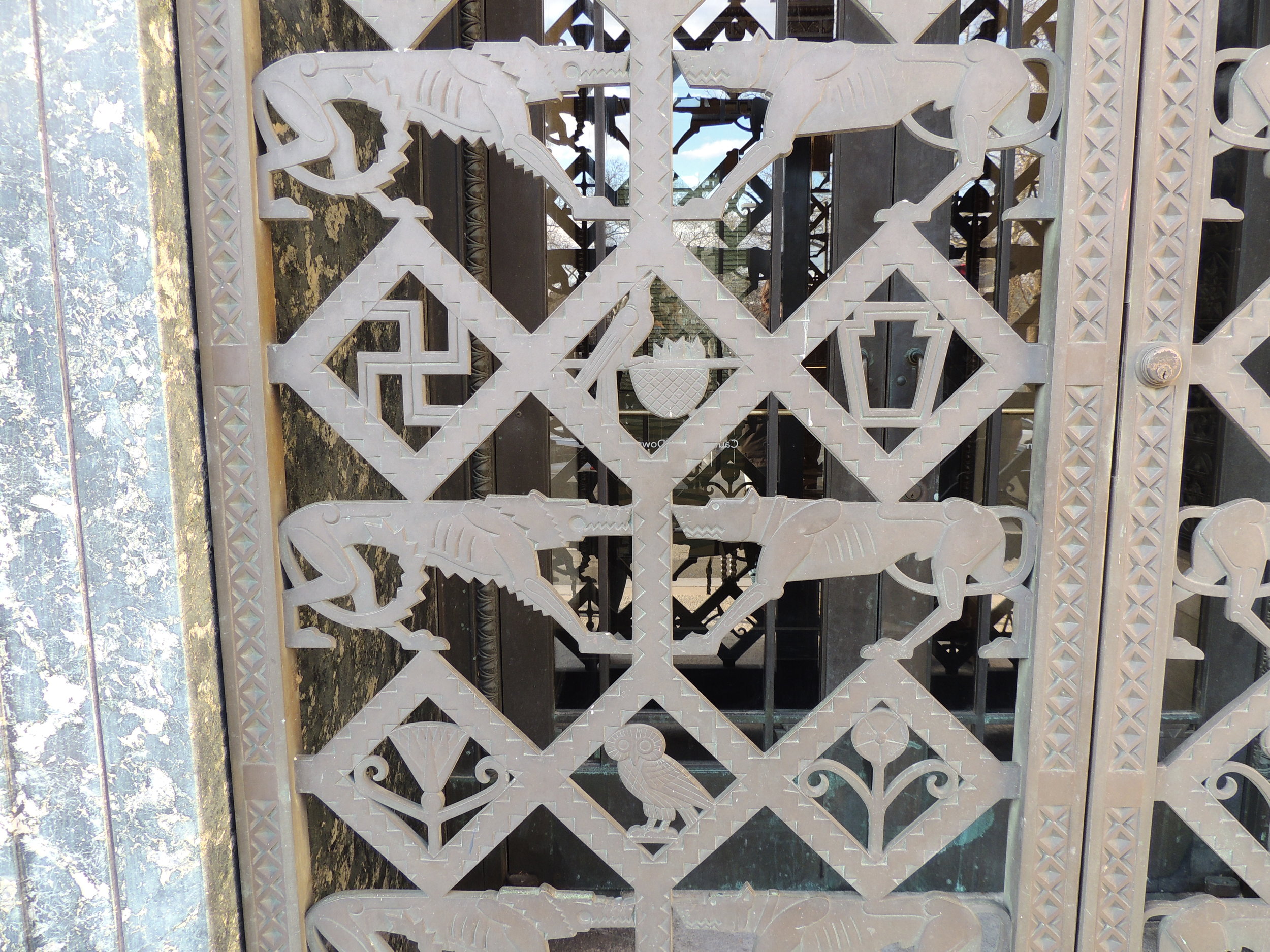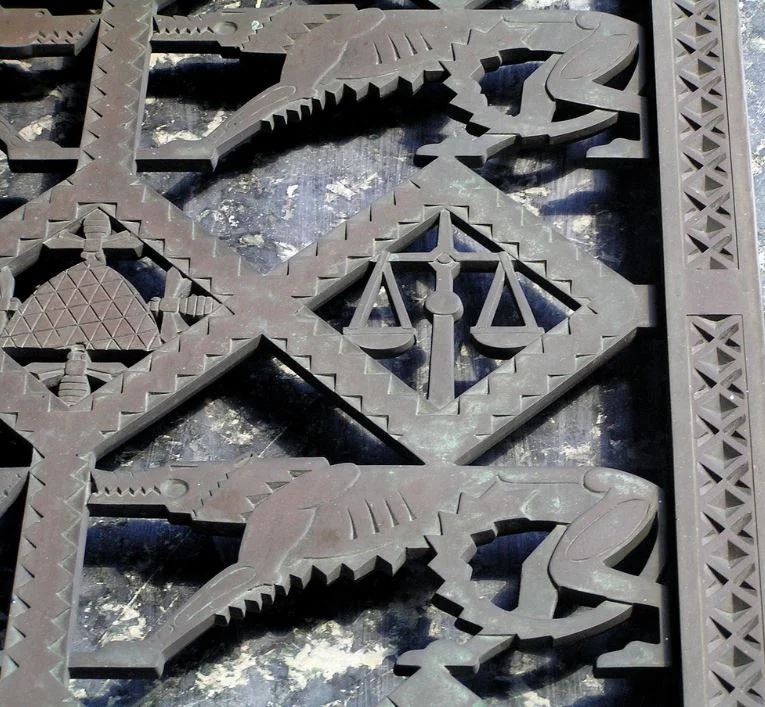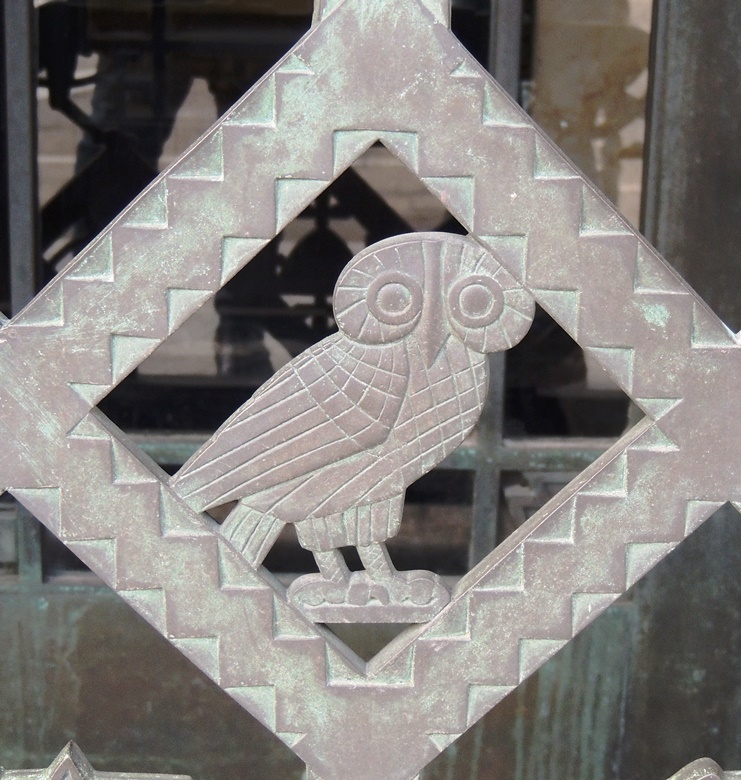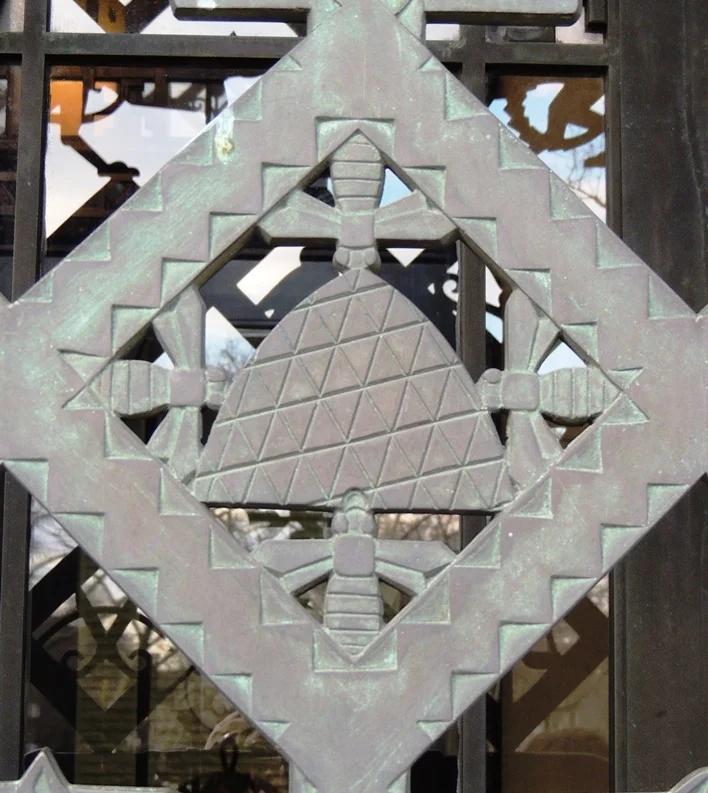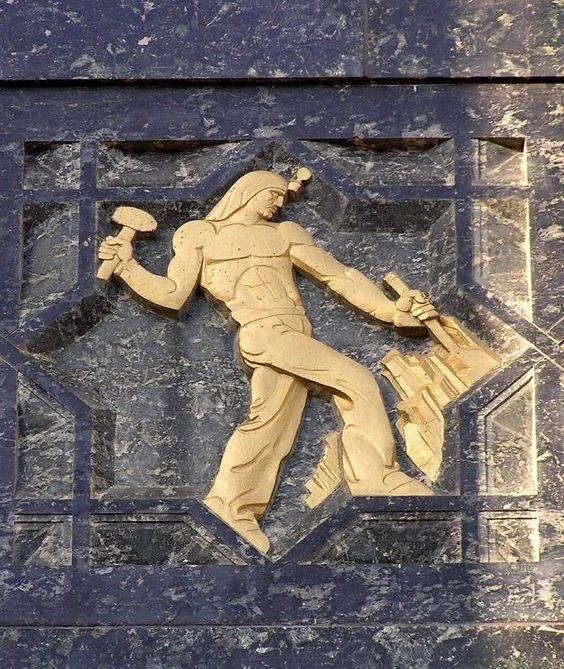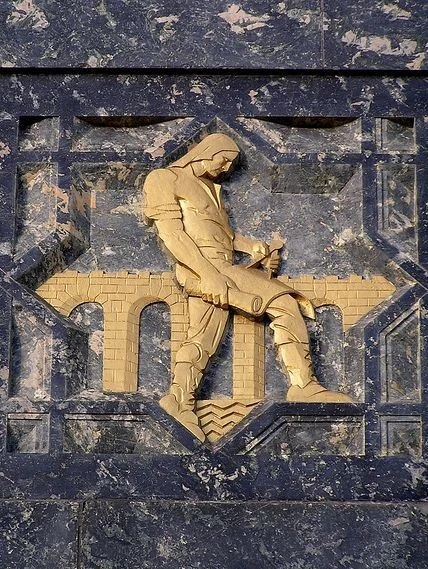Art Deco in Philadelphia
Talin Kraft
On my recent trip to Philadelphia I spent an inordinate amount of time walking around the Perelman Building, which is now a part of the Philadelphia Art Museum. It was originally built in 1927 as the headquarters for the Fidelity Mutual Life Insurance Company. There are absolutely gorgeous Art Deco reliefs and sculptures, a polychrome facade with highly symbolic decorations, two cathedral-like entrances – this building is a gem.
The exterior ornament was done by my favorite Art Deco sculptor Lee Lawrie in collaboration with philosophy professor H. B. Alexander (this pair also worked on another Art Deco treasure – Rockefeller Center in New York).
Here’s a quote from the National Register of historic places: “the building is important as an example of an attitude which proposed that a building ought to represent the owners to the public. The building, because of the wealth of ornament is among the most highly articulated commercial buildings ever designed; it is also one of the most descriptive too. The closest parallel might be to the Gothic cathedrals of the past in their attempt to use sculpture to communicate with the passer-by about the nature of the building and its patron.”
As Lee Lawrie was working on the insurance company headquarters, he chose two main themes to highlight their business philosophy: on one hand, the protective duty of providing insurance that brings security to a family, and on the other, life and fate with all its dangers and unpredictability. Lee Lawrie’s stone embellishments include representations of the Cycles of Life: The Seven Ages of Man and The Twelve Labors of Man, the Perils of Land, Sea, and Air on the Earth's Four Great Continents, the insurance symbols: the Pelican of Charity, the Opossum of Protection, and the Squirrel of Frugality.
Let’s take a closer look.
Personified insurance figures: Fidelity and Frugality on one facade and Friendship and Prudence on the other.
This theme is about "a family as the basis of society and civilization".
Ornamental fauna on the rooftop and flanking the entrances represents symbols of Insurance: the Dog of Fidelity, the Pelican of Charity, the Opossum of Protection, the Owl of Wisdom, and the Squirrel of Frugality. (And yes, these are the official descriptions).
Perils of Land, Sea, and Air (where “perils” are represented by a lightning):
These perils can happen anywhere on Earth's Four Great Continents:
Hazards and joys of Life (note the arrows on Hazards panel and the hearts on the Joys panel):
From what I can tell, Hazards include shipwreck, poison or illness (snake), fire, wild animals, famine (locust), war or fighting (sword), lightning. The cross in a circle probably means death. Not quite sure about the tower (prison? siege?), drinking cup (poison?) and a scorpion (betrayal?).
Joys of life are a bit harder to decipher. There’re some obvious symbols - a crib, cornucopia, wedding rings. An anchor stands for stability and finding a home, padlock means security, so does a shield, a goblet is for celebration. Not quite sure about the clock, beehive (it usually stands for industry) and a ribbon or a banner (an achievement?). And the very top-left symbol is rather obscure, can’t even make it out - is it a hat? A loaf of bread?
Life and Fate.
The Horae are the Greek goddesses of order and justice. They bring the hope for prosperity and other joys (represented by three Graces) that come with good order. They are Eunomia (goddess of good order and lawful conduct, pictured with a scroll – presumably a scroll of law), Dike (goddess of Justice, holding the scales) and Eirene (goddess of Peace, holding a scepter).
The Three Graces are Aglaia (beauty), Euphrosyne (joy) and Thalia (abundance).
The Moirae are the three goddesses of fate personified the inescapable destiny of man. They measured and assigned to every person his or her fate, as symbolized by a thread. Clotho spins the thread of life, Lachesis measures it, and Atropos cuts the thread.
The Sun and the Moon remind us about a cycle of light and darkness, about joys and hardships of life.
The wrought iron Security Gates on the entrance doors are truly amazing. Its main recurring motif is a pair of enemies - a fierce wolf, symbolizing danger, and facing him is an equally fierce dog, standing for security and protection. The wolf and dog are surrounded by a number of smaller symbolic images.
The additional symbols on the security gates include the Owl of Wisdom, the Bees of Industry, the Mother Bird feeding Young (Family and Protection), the Lotus of Life, the Keystone as a symbol of Pennsylvania, the Scales of Justice, the Scissors of Fate (see the Moirae), and, interestingly, the Swastika of Good Fortune. Keep in mind that the building was designed and built in 1926-1927, at a time when it was not recognized as a Nazi symbol. The museum publishes a brochure about the continued use of the swastika, where it basically explains its historical symbolism and the building’s landmark status, which preserves the building’s design elements in its entirety.
Cycles of Life: Seven Ages of Man
“The seven ages of man” references a Shakespearean play “As You Like It” , where the seven stages of a man's life are listed in a famous monologue “All the world's a stage”. Lee Lawrie, however, modernized these stages a bit, treating the advanced age a lot more respectfully.
Cycles of Life: Twelve Labors of Man
This can be seen as a modern take on a theme frequently found in medieval cathedrals in Europe. In cathedrals, these twelve labors are typically connected to the agricultural activities that commonly took place in every month of the year. They are often linked to the signs of the Zodiac, and are seen as humankind's response to God's ordering of the Universe. Here, the astrological and agricultural aspects are removed, but there’s still twelve (the traditional number) of basic labors of man.
To finalize, there’s a screenshot from a nomination form for a National Register of Historic Places Inventory (the building was given historic status in 1973):
